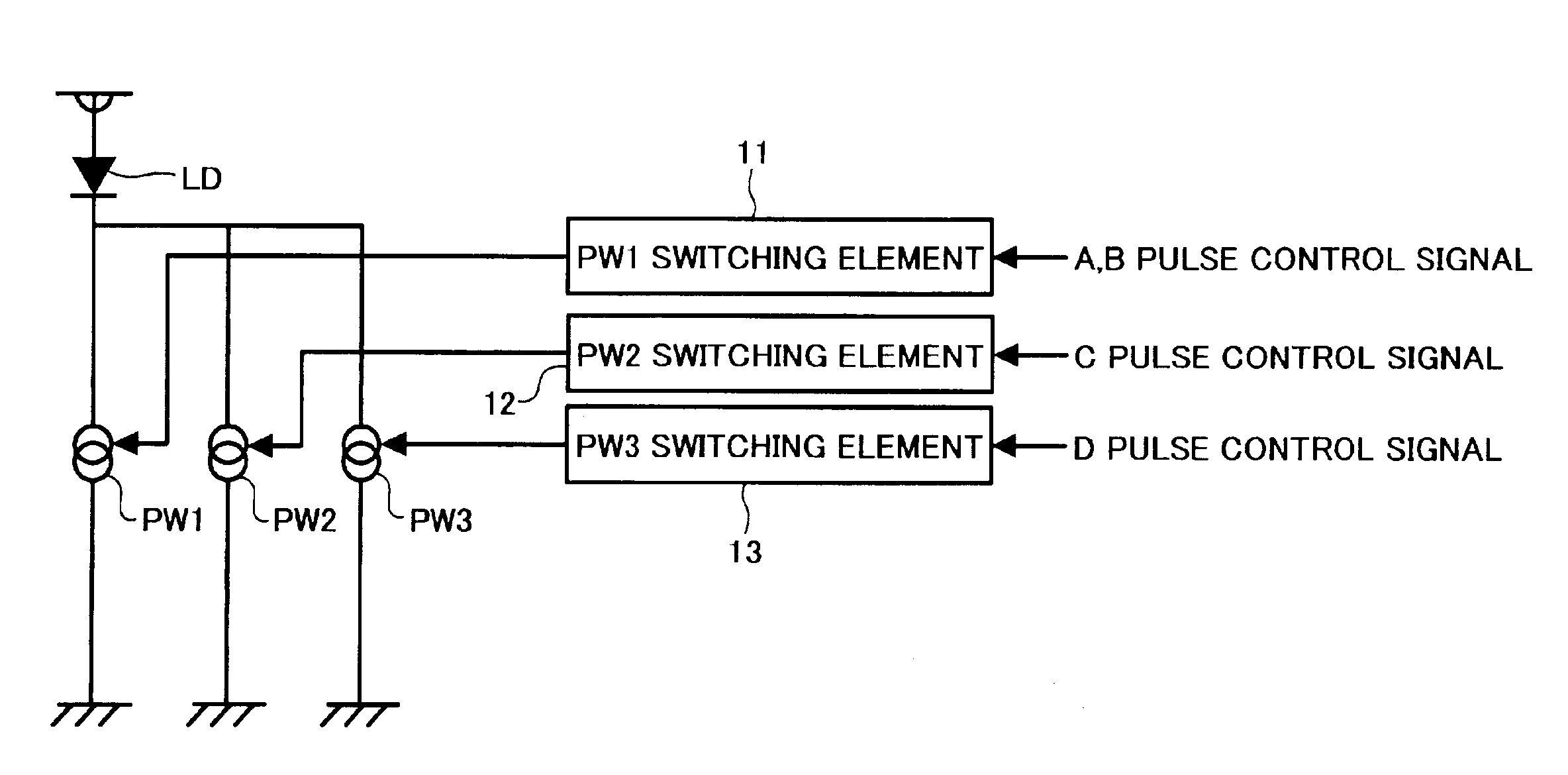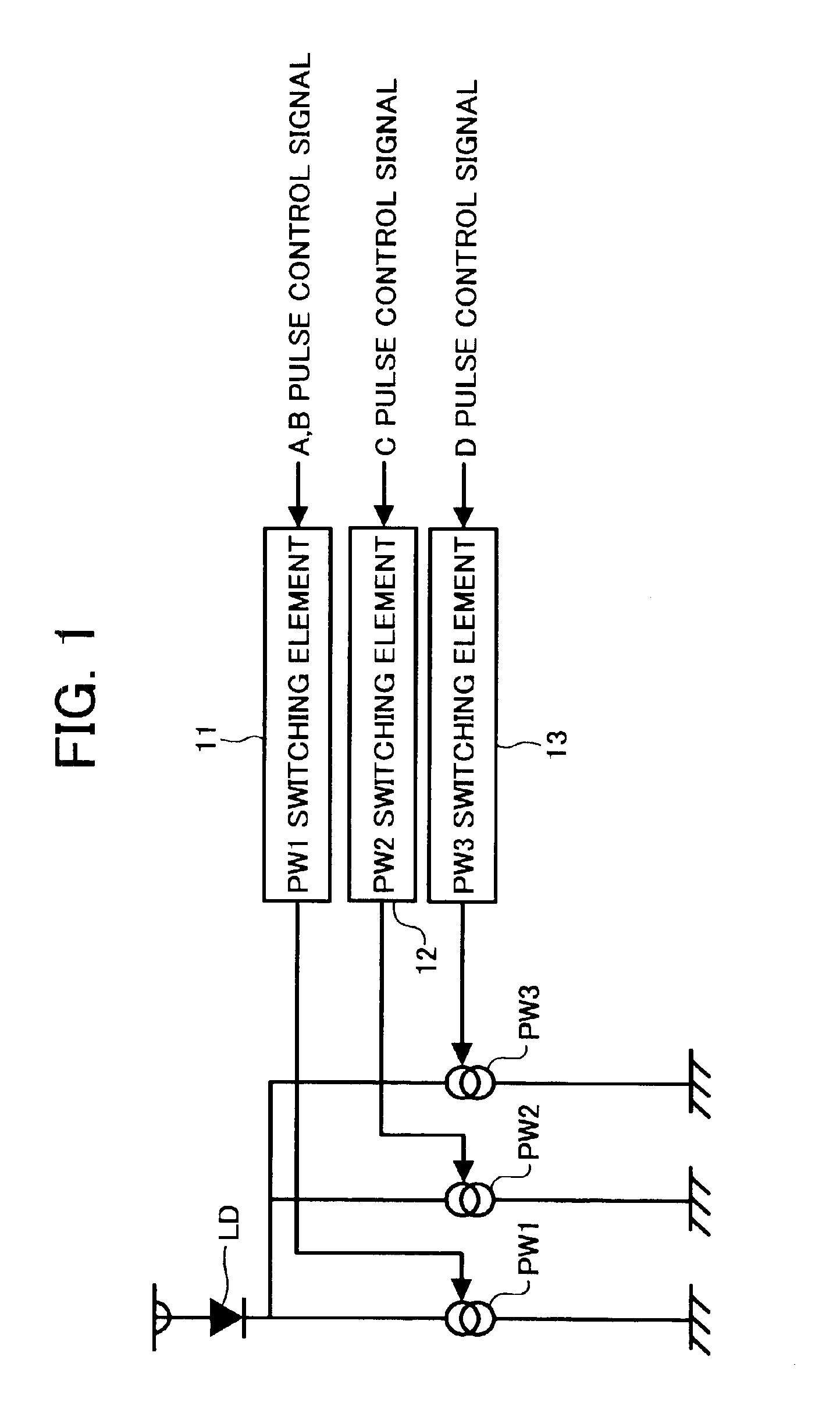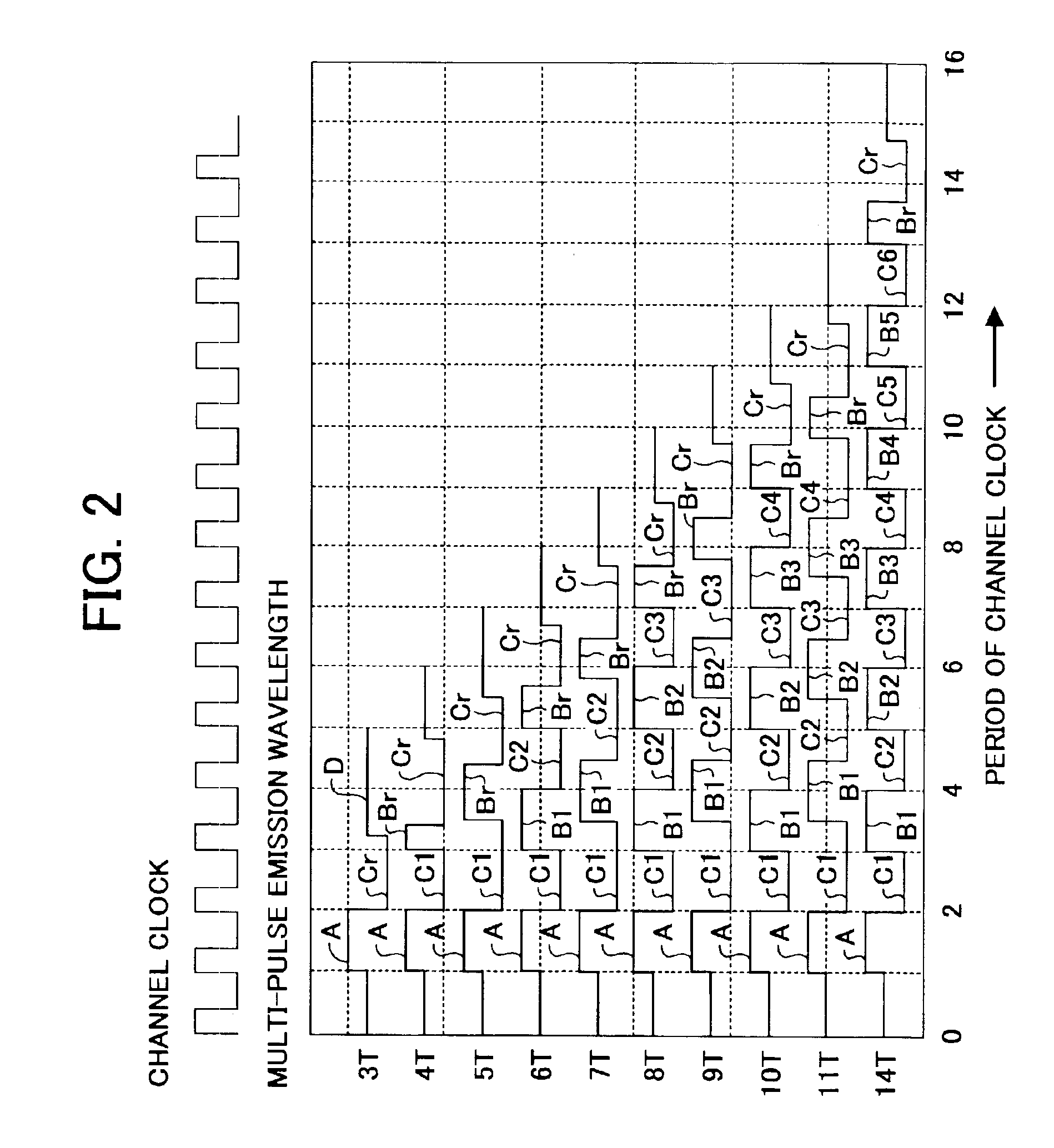Information recording method and optical recording medium therefor
a technology of information recording and optical recording medium, which is applied in the direction of digital signal error detection/correction, thermography, instruments, etc., can solve the problems of incomplete marks, deformation of marks, and low reflectance of marks against laser ligh
- Summary
- Abstract
- Description
- Claims
- Application Information
AI Technical Summary
Benefits of technology
Problems solved by technology
Method used
Image
Examples
example 1
[0102]In the first embodiment of the information record / reproduction apparatus, recording data are recorded in a phase change recording medium while applying laser light having waveform as illustrated in FIGS. 2 and 3. The resultant marks have a predetermined mark length even when the record channel clock is highly frequented.
[0103]When a mark having a shortest mark length of 3T is recorded, multi-pulse laser light constituted of a first heating pulse A having a pulse width of 1.0T, and a last cooling pulse Cr having a pulse width of 1.4T irradiates the optical recording medium.
[0104]When a mark having a mark length of 4T is recorded, multi-pulse laser light constituted of a first heating pulse A having a pulse width of 1.0T, a rear cooling pulse C1 having a pulse width of 1.0T, a last heating pulse Br having a pulse width of 0.5T and a last cooling pulse Cr having a pulse width of 1.3T irradiates the optical recording medium.
[0105]When a mark having a mark length of 5T is recorded,...
example 2
[0129]The procedure for recording and reproduction in Example 1 was repeated except that the wavelength of the last heating pulse Br was changed from 0.4T to 1.0T when marks having a mark length of from 6T to 14T were recorded. The results (σ / Tw) are shown in FIG. 4. As can be understood from FIG. 4, when the pulse width of the last heating pulse Br is from 0.5T to 0.9T, the jitter (σ / Tw) is not greater than 14%. To the contrary, when the last heating pulse Br is less than 0.5T or greater than 0.9T, the rear edges of the resultant marks become unclear, resulting in deterioration of jitter.
[0130]Accordingly, when marks having a mark length of from 6T to 14T are recorded, the pulse width of the last heating pulse Br is set so as to be from 0.5T to 0.9T to form marks having a clear rear edge, resulting in decrease of jitter of reproduction signals.
example 3
[0131]The procedure for recording and reproduction in Example 1 was repeated except that the wavelength of the last cooling pulse Cr was changed from 0.6T to 1.4T when marks having a mark length of from 6T to 14T were recorded. The results (σ / Tw) are shown in FIG. 5. As can be understood from FIG. 5, when the pulse width of the last cooling pulse Cr is from 0.7T to 1.3T, the jitter (σ / Tw) is not greater than 14%. To the contrary, when the last cooling pulse Cr is less than 0.7T or greater than 1.3T, the rear edges of the resultant marks become unclear, resulting in deterioration of jitter.
[0132]Accordingly, when marks having a mark length of from 6T to 14T are recorded, the pulse width of the last cooling pulse Cr is set so as to be from 0.7T to 1.3T to form marks having a clear rear edge, resulting in decrease of jitter of reproduction signals.
PUM
| Property | Measurement | Unit |
|---|---|---|
| Temperature | aaaaa | aaaaa |
| Magnetic field | aaaaa | aaaaa |
| Magnetic field | aaaaa | aaaaa |
Abstract
Description
Claims
Application Information
 Login to View More
Login to View More - R&D
- Intellectual Property
- Life Sciences
- Materials
- Tech Scout
- Unparalleled Data Quality
- Higher Quality Content
- 60% Fewer Hallucinations
Browse by: Latest US Patents, China's latest patents, Technical Efficacy Thesaurus, Application Domain, Technology Topic, Popular Technical Reports.
© 2025 PatSnap. All rights reserved.Legal|Privacy policy|Modern Slavery Act Transparency Statement|Sitemap|About US| Contact US: help@patsnap.com



